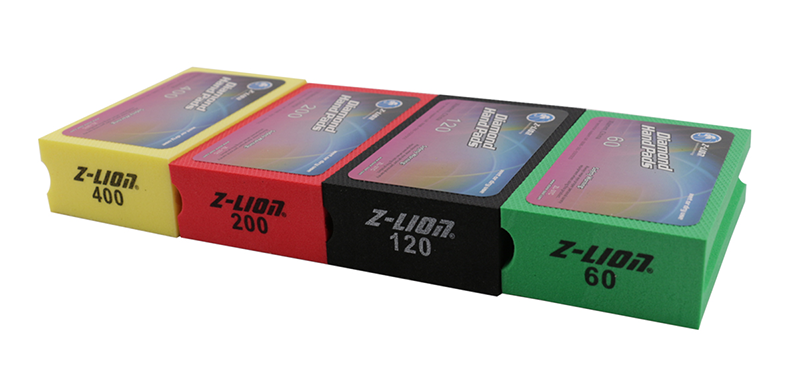By harnessing the abrasive power of an abrasive sponge, its potential as a polishing tool is now being explored. The grit infused in the foam allows users to turn these sponges into makeshift sandpaper for polishing the surface of wooden furniture, metal objects, and even plastic items. The convenience and flexibility that an abrasive sponge offers as a sanding tool have not gone unnoticed. Sanding has traditionally required the use of sandpaper of various grits, which can be time-consuming and messy. However, with these innovative sponges, an all-in-one solution that simplifies the sanding process has been found. A major advantage of using abrasive sponges as a sanding tool is their adaptability to different surfaces. While traditional sandpaper may have specific uses for certain materials, these versatile sponges can be easily used on multiple surfaces without the need for a plethora of sanding tools. Simply switch the size of the grit in the sponge to achieve different degrees of grinding and meet various polishing requirements. Plus, the abrasive sponge is not only effective but gentle enough to avoid damaging surfaces. They ensure a seamless polishing experience and prevent scratches or imperfections that can occur with rough sanding techniques.
Sponge Polishing Pad
One of the outstanding features of the sponge polishing pad is its unique design. These sponges have a non-gritty side to ensure a comfortable grip for the user. Unlike traditional sandpaper, which can wear down and cause hand discomfort and irritation, the sponge polishing pad prioritizes user comfort. This great feature allows one to tackle sanding projects without worrying about sore and irritated hands.
Equally impressive is the flexibility offered by the sponge polishing pad. With their flexible nature, these sponges easily adapt to flat or contoured surfaces. Whether you’re working on a flat wooden tabletop or intricately designed furniture, a sponge polishing pad can provide a versatile solution. This flexibility ensures that every nook and cranny can be sanded efficiently for a smooth, even finish.
Another advantage of using a sponge polishing pad over traditional sandpaper is its durability. Sanding sponges are designed to withstand rigorous use without compromising quality or performance. They maintain their shape and effectiveness for a consistent sanding experience from start to finish. Fatigue and discomfort are common for long polishing projects that require hours of focused work. However, individuals can now enhance the sanding experience by using a stand. By holding the sanding sponge securely on the stand, crafters and DIYers can relieve hand cramps and reduce wear and tear on joints. This simple adjustment allows the individual to maintain a comfortable and stable grip, ensuring optimal results and minimizing fatigue during long sanding sessions. The combination of grit-free grip, flexibility, and durability makes the sponge polishing pad a trusted choice for a variety of projects.
One of the main advantages of sponge polishing pads is their ability to be used in both wet and dry conditions. Wet sanding, in particular, is popular due to its ability to minimize dust generation. By using a sponge polishing pad with water, the dust particles can be effectively trapped in the water, making the working environment cleaner. This makes wet sanding ideal for applications requiring high precision as well as for individuals who are sensitive to dust. Dry sanding with a sponge also offers a less dusty alternative than using traditional sandpaper. The sponge’s unique texture is designed to collect sanding dust and debris, preventing it from becoming airborne and cluttering your workspace. This not only saves cleanup time but also helps maintain a healthier environment by reducing the inhalation of potentially harmful particles. The versatility of a sponge polishing pad goes beyond its dust-free nature. These handy tools can be used on a variety of materials including wood, plastic, metal, clay, and more. Whether you’re prepping a surface for painting or giving a smooth finish to a handcrafted table or cabinet, a sponge polishing pad is up to the task.
Sponge polishing pads are available in a variety of grades, from coarse to fine. Just like with sandpaper, it’s important to start with coarse grit and work up to finer grits for best results. This method ensures that any dents, rough spots, or imperfections are gradually smoothed and eliminated. While this step-by-step sanding process may sound time-consuming, rest assured the end result will be well worth it. Starting with a coarse grit, a sponge polishing pad is effective at removing any prominent surface irregularities. With each subsequent step, finer grit is used and the sponge further refines the surface, leaving a perfectly smooth finish. To make this process more efficient, some manufacturers offer color-coded sanding sponges. This ingenious feature allows users to easily identify and differentiate the different grain sizes at a glance. Each grade is assigned a different color, eliminating any confusion or guesswork when choosing the right sponge for the job.
Post time: Jul-19-2023

